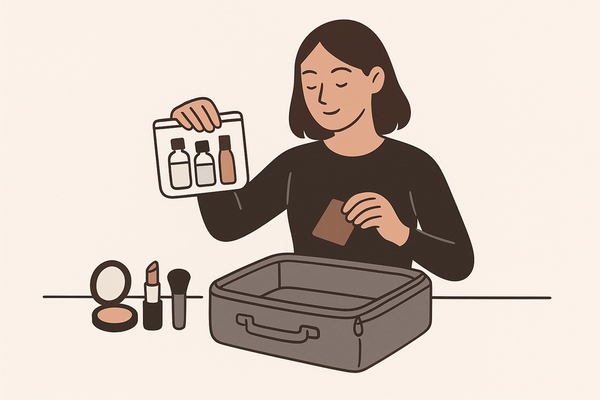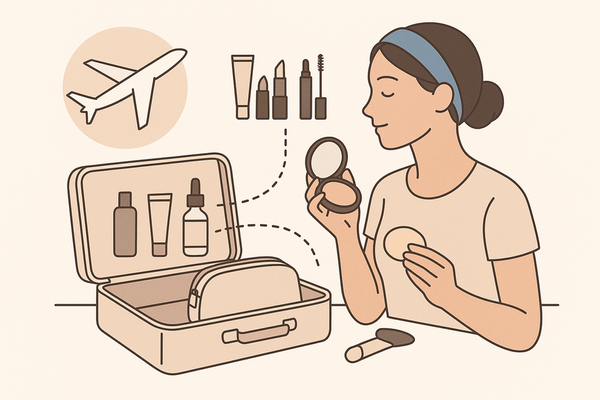Creative Makeup Designs: A Complete Guide to Bold, Innovative Artistry
Explore creative makeup designs with bold colors, innovative textures, and unique patterns. Learn techniques for self-expression and artistic enhancement.

Estimated reading time: 12 minutes
Key Takeaways
- Creative makeup empowers self-expression through avant-garde colors, textures, and patterns.
- Trends evolve from Ancient Egypt through Hollywood to AI-driven prototyping today.
- Master essential elements: bold pigments, innovative textures, graphic shapes, and proper tools.
- Follow a step-by-step process from skin prep to fine details and long-lasting setting.
- Leverage expert tips, avoid common pitfalls, and explore recommended products for flawless looks.
Table of Contents
- 1. Introduction
- 2. Historical Overview and Makeup Trends
- 3. Current Trend Influencers
- 4. Essential Elements of Creative Makeup Designs
- 5. Step-by-Step Process and Techniques
- 6. Inspiration and Makeup Examples
- 7. Product Recommendations and Tools
- 8. Expert Tips and Common Mistakes
- 9. Conclusion and Additional Resources
Introduction
Creative makeup designs go beyond conventional beautification to embrace bold colors, avant-garde textures, unique patterns, and conceptual artistry. Artists worldwide are harnessing these techniques to push boundaries, crafting striking visuals that become a form of personal and cultural expression. According to Sensient Beauty and The Wed Magazine, this playful approach to makeup is accelerating thanks to social media influencers and digital trends.
Today’s creators are also experimenting with AI-powered tools. For instance, Makeup Check AI can instantly generate concepts and analyze color balance:
Historical Overview and Makeup Trends
Early Origins
- Ancient Egypt: Kohl eyeliners and green malachite were used in ceremonies for protection and status.
- Ancient Rome: White lead face paint signified social rank, while red ochre lips denoted beauty ideals.
Evolution Through Eras
- Renaissance: Pale porcelain skin with rouged cheeks represented wealth and artistic influence.
- 20th Century Fashion & Film: Pin-up glamour, Hollywood special effects, and pop art-inspired makeup reshaped trends.
- Late 20th Century Maximalism: Neon shadows, glitter tears, and club kid aesthetics defined a new bold era.
Maximalist Resurgence Today
- Statement eye art: power brows with multi-tone cut creases.
- Multi-dimensional textures: layering metallics, glitters, and pigments.
- Nostalgic references: Y2K shimmer and disco metallic eyelids.
Current Trend Influencers
- Social Media Platforms
– TikTok tutorials, Instagram reels, and Pinterest boards act as global classrooms.
– Artists share daily mini-workshops and step-by-step guides.
(Cinema Makeup Blog Trends, Pinterest Top Trends) - Pop Culture & Celebrity Looks
– Viral cherry-red lips, ethereal “aura” makeup, and editorial color blocking.
– Celebrity collaborations push bold color stories.
(Sensient Beauty Report) - Technological Innovation
– AR try-ons, AI-driven color matching, and virtual makeup filters.
– Real-time previews and personalized product recommendations.
(Industry Technology Insights)
Essential Elements of Creative Makeup Designs
Bold Colors
- Neon vs. High-Saturation Pigments: Neon glows under UV light; high-pigment formulas for impactful everyday wear.
- Color Theory Basics:
- Complementary: Red and green for vibrant contrast.
- Analogous: Blue, teal, and purple for harmonious blends.
- Gradient techniques: Ombré transitions on eyelids and lips for depth.
Innovative Textures
- Metallic powders: Liquid metals and chrome finishes for futuristic shine.
- Cosmetic-grade glitter: Fine, bio-glitter ensures safety and sparkle.
- 3D elements: Microbeads, silicone prosthetics, and false petals for dimension.
- Iridescent highlighters: Color-shifting sheen on high points.
Unique Patterns and Shapes
- Graphic liners: Sharp wings and floating eyeliner shapes.
- Negative space: Leaving skin bare within liner designs for contrast.
- Asymmetrical motifs: One-eyelid designs and off-center lips.
- Mixed media face painting: Watercolor drops and stamped symbols.
Tools and Product Choices
- Brushes
– Synthetic vs. Natural bristles: Synthetic for creams, natural for powders.
– Shapes: Flat shader for color packing, tapered blender for fades, angled for precision. - Palettes and Pigment Types
– Pressed shadows for portability; loose pigments for maximum intensity.
– Cream pigments and mixing mediums: Intensify color and secure glitter. - SFX Products
– Latex prosthetic kits, skin-safe adhesives, and body paints by Mehron and Kryolan. - Hybrid Beauty Products
– Tinted moisture-serums and cushion compacts with long-wear polymers.
Step-by-Step Process and Techniques
- Skin Prep
• Cleanse with a pH-balanced gel.
• Apply a humectant moisturizer.
• Select a primer: silicone-based for smoothing or water-based for hydration.
• Address hydration levels and pore filling as needed. - Base Creation
• Choose a buildable foundation (stick or airbrush mousse).
• Blend with a damp sponge for dewiness or a brush for matte finish. - Design Sketching
• Map out shapes using a white eyeliner or concealer pencil.
• Mark symmetry points. - Color Application
• Pack pigments with a flat shader brush.
• Blend edges with a fluffy blender.
• Layer thin coats and use pat-and-swipe motions to minimize fallout. - Dimension Building
• Contour with cream-to-powder techniques under cheekbones.
• Highlight high points with metallic or iridescent products.
• Blend matte to metallic gradients and add glitter sparingly. - Fine Details
• Use ultra-fine liners or angled brushes for crisp lines.
• Employ stencils and attach cosmetic gems with lash glue. - Setting and Refining
• Finish with a dual-phase setting spray.
• Dust translucent powder under eyes to catch fallout.
• Perform a final symmetry check and touch-ups.
Pro Tip: Reserve stiffer synthetic brushes for graphic details and seal pigments with a mixing medium for extra vibrancy.
Inspiration and Makeup Examples
Notable Artists & Influencers
- Pat McGrath
Signature: Hyper-pigmented lips and metallic eye foils.
Gallery: Instagram, Official Gallery - Ana Takahashi
Signature: Editorial color blocking and floral motifs.
Gallery: Instagram, Portfolio - Mimi Choi
Signature: Optical illusion face art.
Gallery: Instagram, Works - Pony Makeup
Signature: Soft-grunge palettes and floating eye art.
Gallery: Instagram, Gallery - NikkieTutorials
Signature: Cut-crease precision and dewy finishes.
Gallery: Instagram, YouTube Highlight
Explore mood boards on Pinterest and join the conversation with #CreativeMakeupDesigns to fuel your own innovation. Discover future-forward looks at Avant-Garde Makeup Trends and learn how AI empowers creativity at Creative Makeup Designs with AI.
Product Recommendations and Tools
- High-Pigment Eyeshadow Palettes
– Pat McGrath Mothership VIII for 90% color payoff.
– Huda Beauty Neon Obsessions for intense neon hues. - Face Paints and SFX Kits
– Mehron Paradise AQ: Water-activated and FDA-compliant.
– Kryolan Aquacolor: Cream formula, hypoallergenic. - Synthetic Brushes and Tools
– Sigma E40 Tapered Blending for seamless fades.
– Morphe M213 Flat Definer for sharp liner work. - Hybrid/Multifunctional Products
– Kosas Wet Lip Oil: Hydrating with sheer color.
– Rare Beauty Soft Pinch Tinted Lip Oil for buildable pigment. - Glitters and Gems
– Lemonhead.LA Ultralight Glitter: Vegan and cosmetic-grade.
– ColourPop Glitter Gel: Easy peel-off formula.
Tip: Opt for hypoallergenic, fragrance-free products and match undertones to your complexion.
Expert Tips and Common Mistakes
- Expert Insights
“Invest in professional-grade pigments for lasting vibrancy.” – Cinema Makeup Blog
“Practice brush control on paper before skin.” – Pro precision tip - Common Mistakes & Solutions
- Over-blending graphic lines: Shapes blur. Solution: Use a firm, small brush.
- Skipping skin prep: Foundation patches. Solution: Always cleanse and prime.
- Low-quality pigments: Fading or patching. Solution: Check reviews and ingredients.
- Neglecting symmetry: Uneven designs. Solution: Use facial grids and mirror tilts.
- Fallout under eyes: Glitter specks. Solution: Dust translucent powder before application.
Cleanup: Employ micellar water or a makeup remover pen for precise corrections.
Conclusion and Additional Resources
From ancient rituals to AI-powered prototyping, creative makeup designs celebrate self-expression and artistic exploration. As trends evolve, these techniques continue to shape fashion, film, and digital culture. For deeper insights, revisit Pinterest’s Top Trends and the Sensient Beauty Forecast.
Join online communities like Reddit’s r/MakeupAddiction or the Facebook group “Avant-Garde Makeup Artists” and keep experimenting with new palettes and techniques. Happy creating!
FAQ
- Q: What defines creative makeup design?
A: Creative makeup design uses unconventional colors, textures, and patterns to convey artistic concepts and personal storytelling.
- Q: How can I start experimenting with avant-garde looks?
A: Begin with a basic color theory and invest in a few high-pigment shadows. Practice simple graphic liners and build up to more complex textures.
- Q: Are AI tools reliable for makeup design?
A: AI tools like Makeup Check AI can inspire concepts and optimize color balance, but hands-on practice remains essential for mastering techniques.




